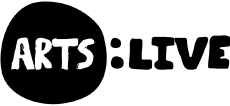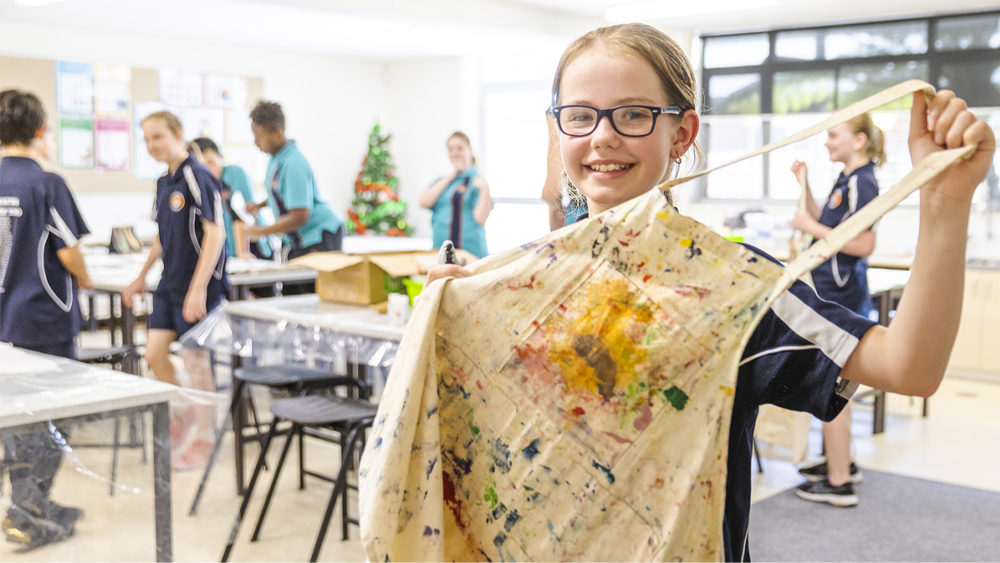As clearly outlined in the Australian Curriculum, general capabilities play an important role in equipping young Australians to live and work successfully in the twenty-first century.
Integrating general capabilities through The Arts adds depth and richness to student learning. Music, dance, drama, media and visual art experiences provide students with the opportunity to communicate, collaborate, problem solve, and reflect. Authentic arts learning experiences have the capacity to develop students’ cultural awareness, interpersonal skills and sense of wellbeing. This learning is what will carry them forward in life, helping them to navigate complex and changing circumstances beyond the classroom with creative skills and confidence.
ARTS:LIVE offers teachers a variety of resources that support the seven general capabilities. Resources include lessons, ideas for extending learning and an assortment of activities that will build student knowledge, skills, behaviours and dispositions.
Here are some ideas from ARTS:LIVE to support general capabilities in Term 3.
Literacy
How to Create a Storyboard
Students will enhance and extend their literacy skills as they go through the process of writing a story, breaking it down into simple pictures to create a storyboard. They may analyse how professional film-makers use storyboard films and share and analyse each other’s work.
Each step of the process offers the opportunity to plan, draft and produce imaginative ideas. Oral or written presentations may help students to articulate their concept and analyse the best shot type to capture their vision. Students begin to understand film making terminology and develop their ability to use language dynamically and flexibly.
Numeracy
Concrete Poetry
How can the meaning of words be presented in a mathematically visual way? In Concrete Poetry students will examine the abstract nature of words – their patterns, symmetry, shape, scale, proportion and the arrangement of the letters, as well as the sounds and position of the letters in the words.
Students will reflect on several concrete poets’ works from the collection at Melbourne’s Heidi Museum of Modern Art, and use the techniques learned to transpose their 2D artwork and create their own 3D concrete poem.
Ethical understanding
Sustain Your Art
By challenging viewers to rethink their wastefulness, contemporary visual artist Ash Keating explores the growing environmental problems facing our society – including issues of over-consumption and waste. Students explore how ethical principles and choices affect Keating’s art.
Students apply the skills of reasoning, imagination to plan, reflect on, refine and document their visual arts ideas and processes. They are encouraged to share, investigate and respond to ways their artworks communicate important ideas to an audience, and speculate on how life experiences influence people’s decisions.
Personal and Social Capability
Harmonic Shift: Song of Resilience
Encourage children to build their resilience, develop literacy skills and foster respect through the ARTS:LIVE resource, Harmonic Shift: Songs of Resilience.
This course includes ten lessons packed with creative activities that support students to develop new vocabulary, explore socio-emotional themes and gain musical confidence. The lessons can be used sequentially or independently to support the needs of different classrooms.
Harmonic Shift: Songs of Resilience is a collection of songs and stop-motion animation videos centred around wellbeing. All videos are supported by backing tracks, lyrics and chord sheets, giving teachers the ability to support or extend additional learning as required.
Intercultural Understanding
Too Many Cheeky Dogs
Step inside the pages of Johanna Bell & Dion Beasley’s warm and entertaining children’s book Too Many Cheeky Dogs to explore the colourful characters, animals and landscapes of Tennant Creek in the remote Australian outback.
Using Process Drama techniques over nine sessions, you’ll learn about Indigenous culture, Australian animals and what it’s like to live in a remote Australian community through Dion’s eyes.
This resource also introduces young people to sign language and explores disability through the book’s presentation and translation into Auslan (Australian sign language) giving students the opportunity to explore their own cultural identities and compare their experiences and worlds to others.
Information and Communication Technology (ICT) Capability
Shocko Doco
![]() 10 × 45 minute lessons
10 × 45 minute lessons ![]() Year 5 – 6
Year 5 – 6
Shocko Doco draws on students’ knowledge of the variety of program genres and contexts for video interviews, and provides them with an opportunity to consolidate and extend this knowledge to become effective digital citizens and ‘readers’ of media.
The two mediums responsible for increasing the audience of interviews in recent years have been the internet and YouTube. This resource includes 10 lessons that will take students on a documentary journey to evaluate interviews, and to locate, access, and select information. They will then to design, create and share their work.
Critical and Creative Thinking
School of Fish
![]() 5 × 45 minute lessons
5 × 45 minute lessons ![]() Year 2
Year 2
In creating artworks, students draw on their curiosity, imagination and thinking skills to pose questions and explore ideas and spaces. In this resource students explore what it takes to work together as one by creating imaginative shapes and placing them within a spatial context.
Through improvisation they consider possibilities and make choices that assist them to take risks and express their ideas, concepts, thoughts and feelings creatively. Once they have practised and performed their movement they will spend time recalling the dance shapes and communicate them through drawings.








